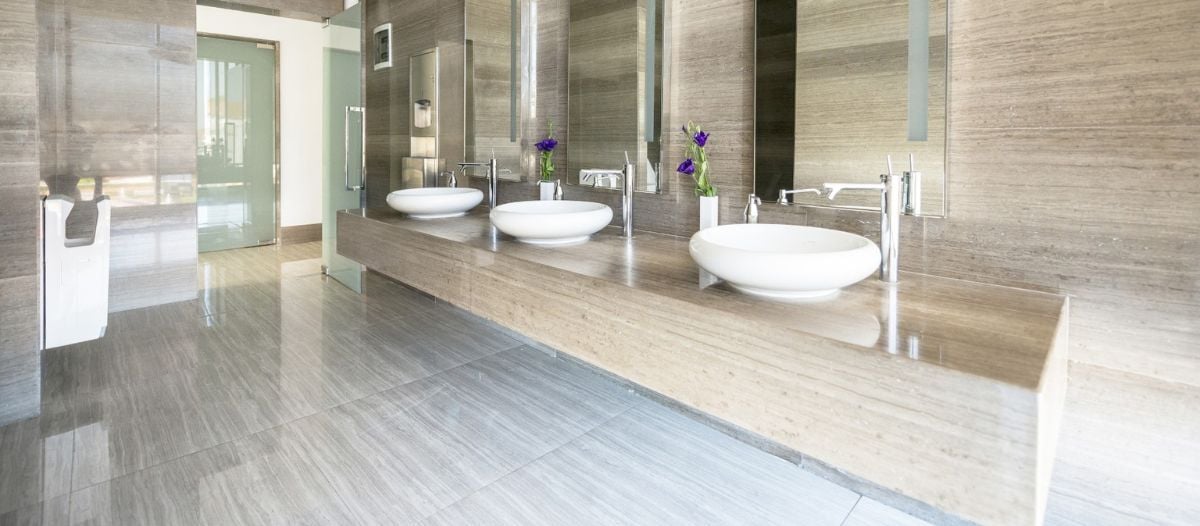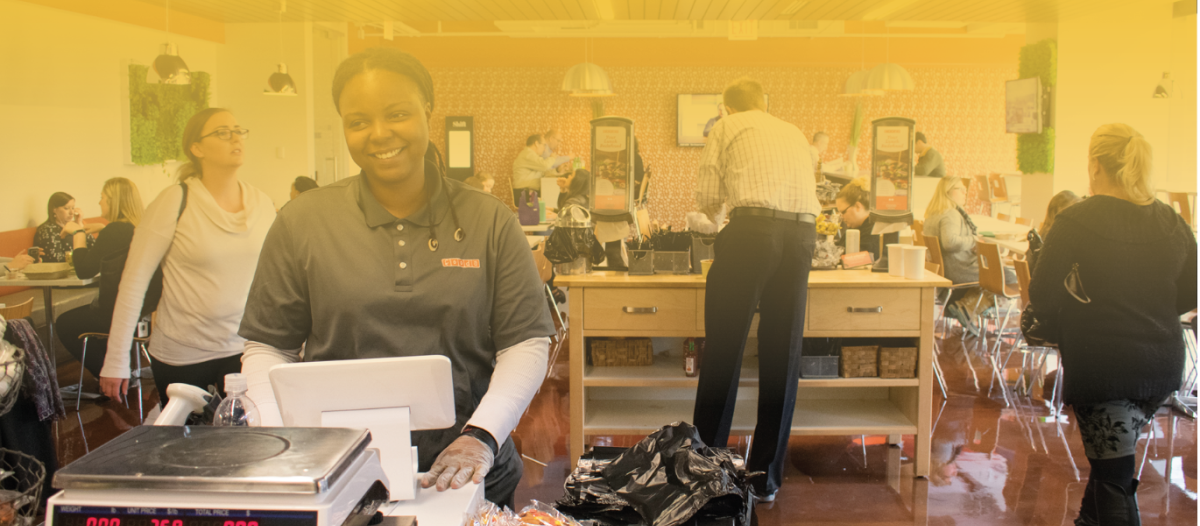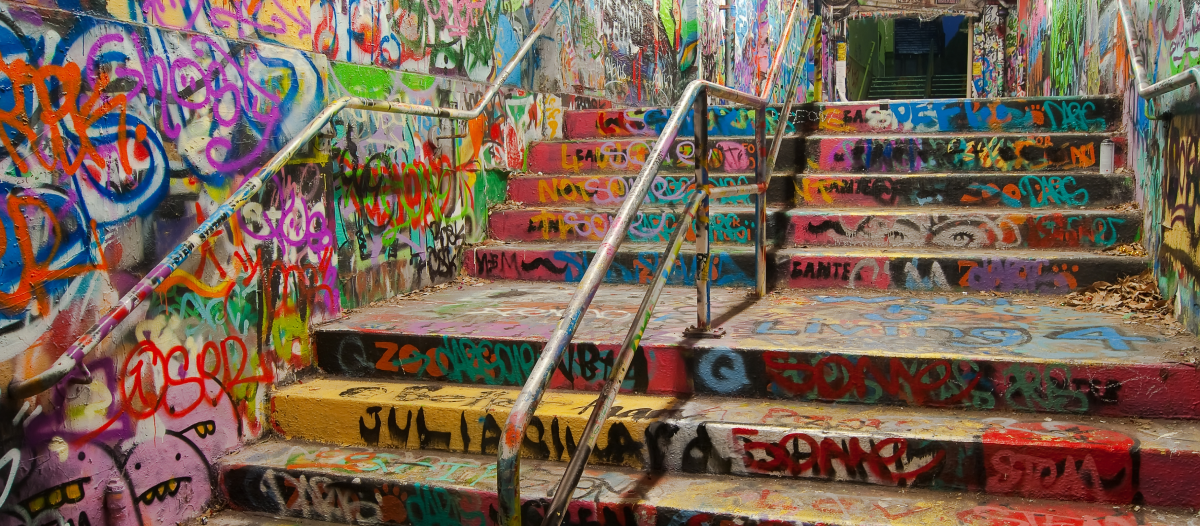Invest in Sinks & Toilets, Not Boardrooms
Want to improve your facility’s image? Start with the restroom

The commercial property sector is steadily recovering from the pandemic, with leased office vacancy rates across the U.S. averaging 18.1 percent, according to a report released in April 2025 by Colliers, a global company providing services to commercial real estate users, owners, investors and developers. However, office vacancy rates in some areas of the U.S. remain higher than 20 percent, with vacancy rates at 23.8 percent in Los Angeles, 24.2 percent in Chicago, 27.9 percent in Houston and 30.6 percent in San Francisco. As you can imagine, building owners and managers hope for a turnaround this year.
Custodial contractors are also hopeful this will be a rebound year. Most of their bids are based not just on the size of a facility but on occupied square footage. A 20 percent vacancy rate can significantly impact cleaning contractors’ pocketbooks.
Some financial experts believe 2025 holds the potential for a modest rebound. An article in Business Insider said, “Resilient economic growth has propelled demand for commercial space, warehouses, retail stores and hotel rooms.”
But there is a catch. According to data from CommercialBuildings.com, the average age of a commercial building in the U.S. is over 50 years. This means that more than half of the country’s buildings may need sprucing up to attract new tenants. One area that speaks volumes when sprucing up a facility’s image is its restrooms.
Restrooms talk
Restrooms are often the most telling feature in a commercial building, reflecting the entire facility and how it is managed. Clean, well-maintained restrooms demonstrate the facility’s concern for building users and visitors and play a crucial role in creating a positive image for the entire facility.
However, simply being clean is not enough. Upgrading restrooms with modern fixtures and high-quality amenities not only conveys that this is an upscale and professional building but also significantly enhances user satisfaction, thereby increasing the value of your investment.
Some building owners and facility managers even view upgrades as so essential that they take them to the next level, reimagining restrooms as respite areas where users can pause and relax for a few minutes from their hectic workday.
The upgrading process
Because a clean, well-designed restroom with high-quality fixtures can improve a facility’s image, how do we create them? Here are some guidelines to follow:
-
Modern fixtures: Replace outdated fixtures with touchless, sensor-operated ones. This includes faucets, toilets, water-using urinals, soap and paper towel dispensers. Look for sleek, contemporary fixtures, but make sure they are also practical and durable.
-
Water efficiency: Facilities typically consume most of their water in two areas: outdoor landscaping and restrooms. You can significantly lower water consumption and operating costs by selecting high-performance toilets that use 1.28 gallons per flush (or less) and installing waterless urinals. These technologies save water and money, making your facility more efficient and environmentally responsible.
-
Monitoring systems: Technologies that monitor paper and water usage, detect maintenance needs and notify cleaning staff when supplies like soap, paper towels or hand sanitizer are running low are now expected in an upgraded restroom.
-
Aesthetics: Select attractive, durable materials for countertops, flooring and walls. Avoid fluorescent lighting and be cautious with LED lighting, as these options can make a restroom look too industrial or too bright. Select stylish lighting and add artwork and plants to create a welcoming ambiance and a place for respite.
-
ADA compliance: The Americans with Disabilities Act (ADA) is not stagnant. It is reviewed and changed every five years. Make sure your new restroom meets the latest ADA requirements.
-
Signage: Display signage in the new restroom that explains the steps you took to make it more comfortable, eco-friendly and sustainability-focused. Note why waterless urinals and low-flow toilets were selected and let patrons know if the restroom is cleaned using environmentally preferable solutions and methods. This transparency shows a facility’s commitment to sustainability, which users will appreciate.
-
Accessibility: Make restrooms accessible to everyone by installing features like grab bars, lower sinks and wider stalls. These adaptations promote inclusivity and demonstrate consideration for all users, making everyone feel welcome and valued.
-
Comfort & convenience: Add amenities such as baby changing stations, full-length mirrors and spacious stalls. However, always consider the facility’s specific use. For example, a restroom designed for a high-end office building might not be suitable for a restroom in a manufacturing site.
Restrooms as an investment
View restroom renovations as a strategic investment. By prioritizing updates, building owners/managers can significantly enhance their facility’s image. Also, realize that transforming restrooms is not just an upgrade; it is a powerful statement about an organization’s values, diligence and dedication to creating a comfortable work environment.
The potential return on the investment of these upgrades, in terms of increased tenant satisfaction and new tenant attraction, should not be underestimated.
Editor’s note: This article originally appeared in Cleaning & Maintenance Management magazine. Its inclusion in IFMA’s FMJ is part of a strategic partnership between IFMA and ISSA.

Klaus Reichardt is CEO and founder of Waterless Co. Inc., a family-owned company that markets waterless urinals and other restroom products. He is widely known as a thought leader and influencer regarding water-related issues and the commercial restroom industry. He aims to help facilities use less water, use it more efficiently and lower operating costs.
Read more on Real Estate and Occupancy & Human Factors or related topics Occupant Services and Operations and Maintenance Planning
Explore All FMJ Topics









